
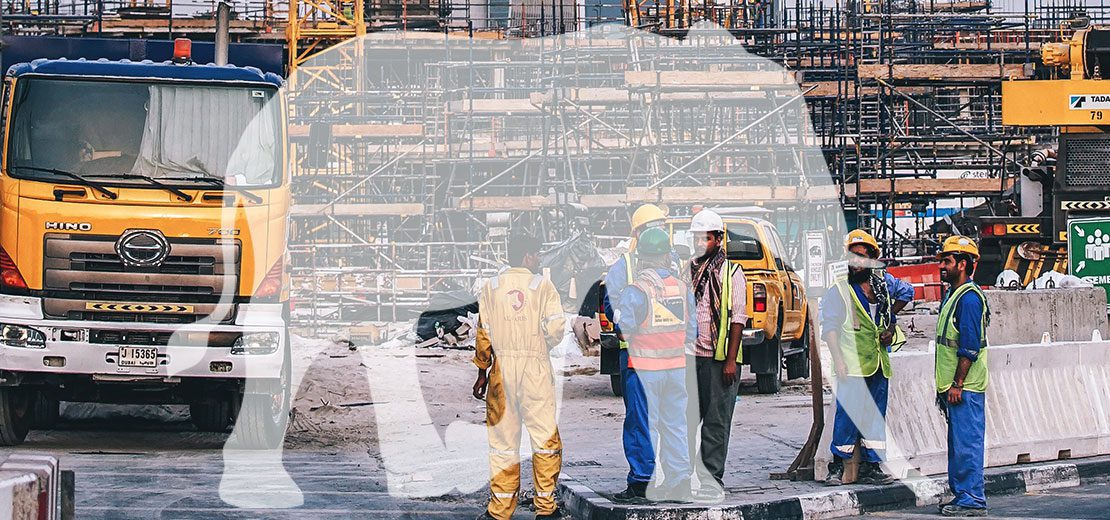
We are at the stage of evolution within the construction industry where each person in it may well have a different view on what downtime means, but most are starting to agree that it needs to be addressed. Many companies are implementing solutions to solve similar, or the same, downtime-related challenges. The very nature of our industry is project-based, which means that complex, temporary organisations are repeatedly created and then dismantled. This means that people, processes, data and machinery have to unite coherently, efficiently and safely on each project in a different configuration every time. It is little wonder that downtime occurs. This is truly the mother of all problems in our industry.
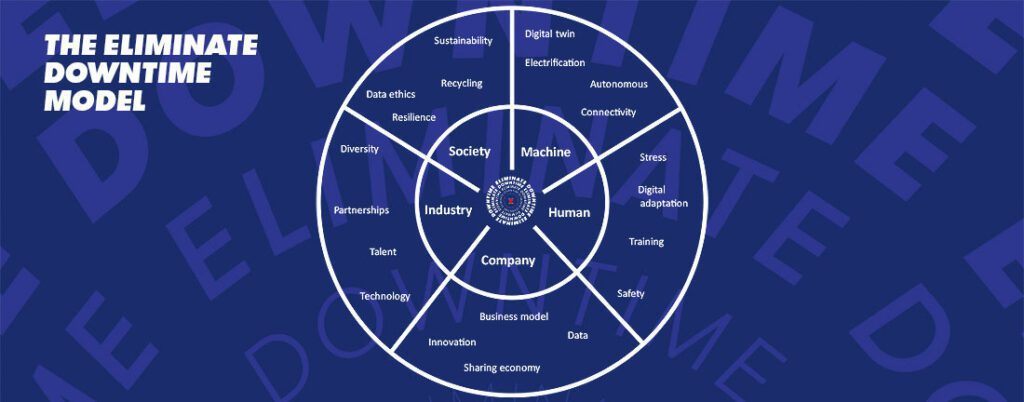
It is time we discuss the limits of individual perception and the importance of complete context. At our recent event in London, Soeren Jensen, our CCO, said “We need to break down the silos to rethink the way we collaborate.” It seems that a good many in the industry now agree. The stories we heard touched on each company experiencing their own version of downtime, and showing how they overcame these problems, but it was clear that the room recognised the need for a cross-industry view and collaboration.
In an effort to relate how we view the larger challenge, we have broken it down into five main areas, which in turn illustrate how wide-reaching the Eliminate Downtime movement is and the range of stakeholders involved.
The Eliminate Downtime Model:
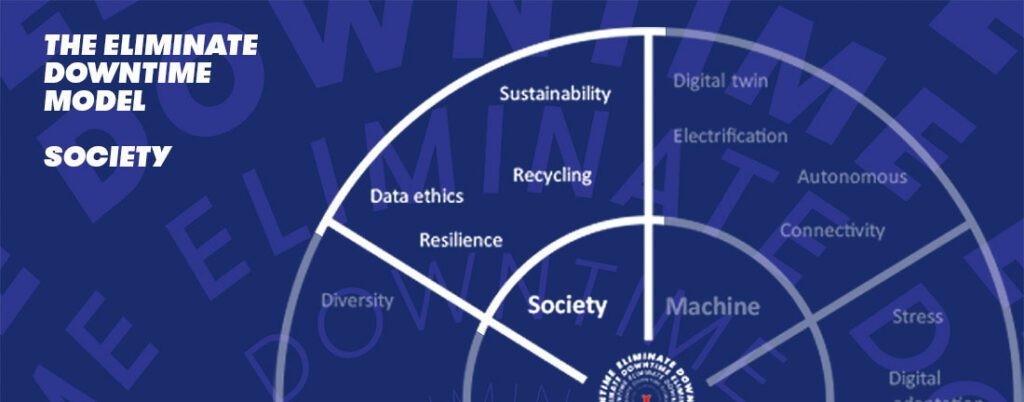
This is all things that either affects the wider society, or anything in society that affects the construction industry. For example, from how we deal with waste products from a site, or how we can limit fuel usage and idle time of machinery, through to how we make the construction industry as a whole greener by finding new, and more sustainable solutions. From a top down point of view, under the Society banner, maybe collectively we can even find ways of building resilience towards future economic downturns. The need to share data raises a number of ethical issues, especially as companies begin to monetise their data externally for purposes other than those, for which the data was initially collected. An ethical approach to handling data may just provide enough security to allow companies to agree on a standard way of accessing it. It’s important that we sustain trust and take topics like privacy, ownership and security seriously.
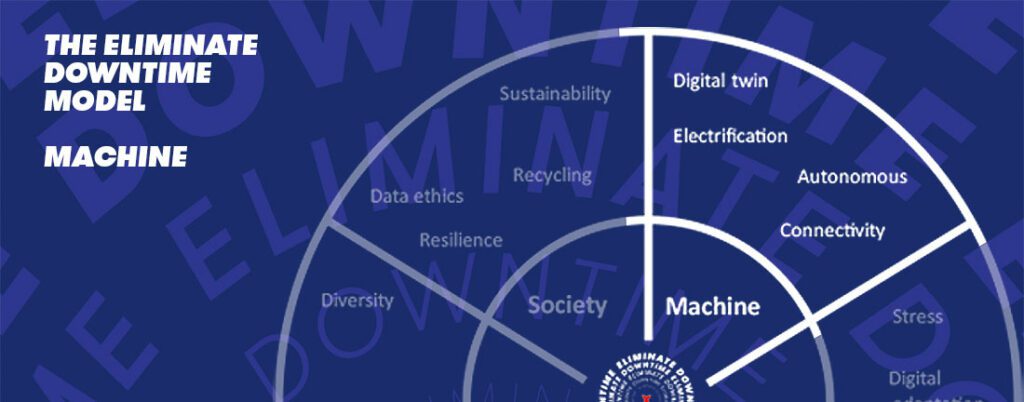
There are four major new trends making their way into this area, that will have an impact on day-to-day operations, planning and autonomy, as well as the knock-on effect to end users and operators. With more and more ‘things’ connecting to the Internet of Things, we are living in an increasingly connected world. This creates many opportunities and changes in the way that machines could be operated, monitored, serviced and the logistics that accompany them. With Digital Twin technology, which is the ultimate in planning capability, bridges the physical and the virtual world. It uses real-time data and other sources to enable learning and efficiency opportunities, as well as dynamically adjusting for improved decision making. The third trend is the move from diesel to electric machinery, and how this will affect operators, rental companies, site management, servicing and of course how it impacts the industry’s carbon footprint and sustainability. The fourth and final trend is the rise of autonomy and how this affects staffing, training as well as health and safety.
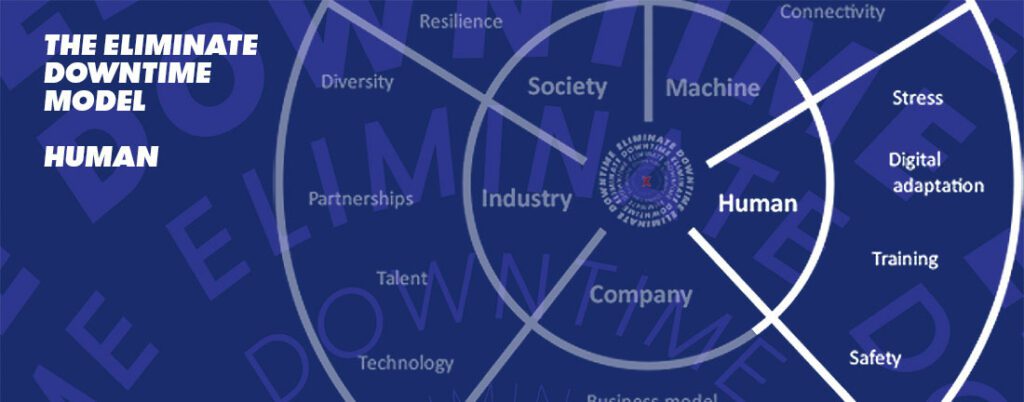
This area is everything related to the human beings who work in our industry, which we’d all like to be seen as more of a destination industry that is currently is. Stress is a very real factor of work for our people, whether it’s related to on-the-site problems, end-of contract, possible redundancies or difficulty planning life around work, we have an opportunity to look to reduce some of these factors. In addition, new digital solutions and opportunities appear every day, which means that we need to manage the impact of this, making sure that people in construction feel safe and see the benefits of adopting new digital solutions. Unfortunately, because the construction industry has more fatal accidents than any other industry, there is a necessary heavy focus on health and safety, but with all the incoming changes that are improving our industry, we have to always keep in mind the safety, well-being, training and skills levels of our people.
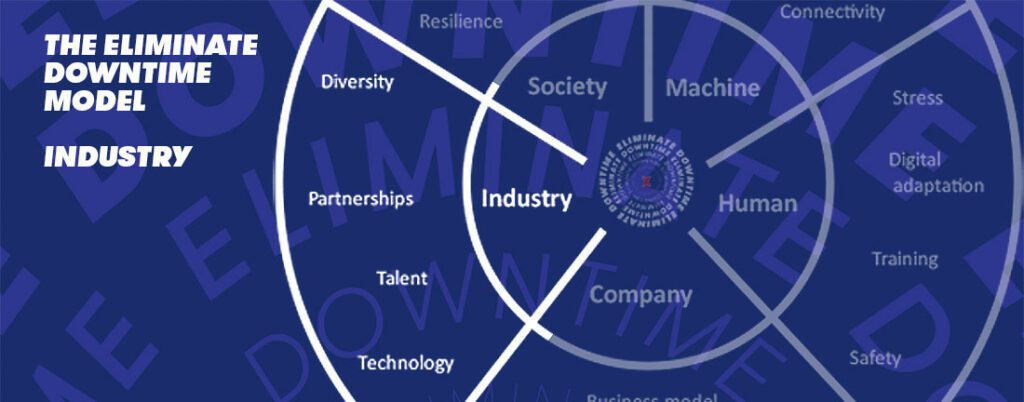
Our industry has some over-arching challenges and opportunities, and we use these words interchangeably, because where there is a challenge, we collectively have an opportunity. There is the opportunity for us to build more diverse teams – research indicates that more diverse teams deliver better business results, and this affects our industry on a wider scale. We have opportunities to build more and better partnerships from all corners of the industry. A stronger ecosystem will deliver benefits across the board. Talent acquisition, staff training, and even logistics bring us opportunities to attract more people, a more diverse mix, and to use all the technology that is coming into play more collaboratively and to plan more effectively.
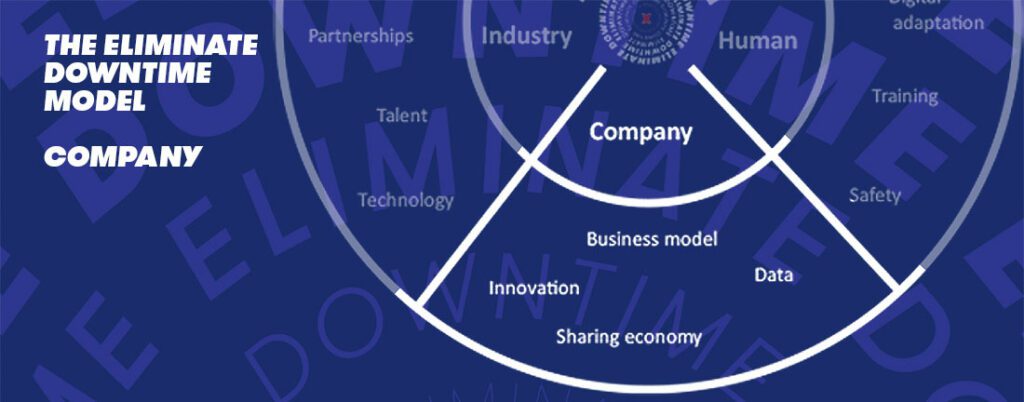
The Eliminate Downtime movement wants to inspire innovation across the industry, and innovation can take many forms. It could be the product form: machinery moving from diesel to electric. It could mean a change in business model, or entirely new businesses starting up with a completely new value chain, disrupting current industry processes. However, it should incorporate using the vast amounts of data that we’re creating in a new way, and it could mean new, open ways of working together.
From these five areas, it is clear how any one person in the ecosystem could have a very limited view of the bigger picture, as they focus simply on their role. We believe that the Eliminate Downtime Model provides a 360 view of how downtime impacts us all, so that we can collaborate more effectively. In time we envision this becoming a maturity model, against which companies will be able to measure their own impact on eliminating downtime and where they can improve.
If we’re all only touching one part of the elephant, then we can’t collectively see the opportunity that is in front of us now: To become a leading industry in coordinated, distributed systems, and to become the cool guys again where a promise is a promise.
This is your invitation to join. Sign up to receive regular updates on the movement and interesting reads about the areas captured in the Downtime Model.

